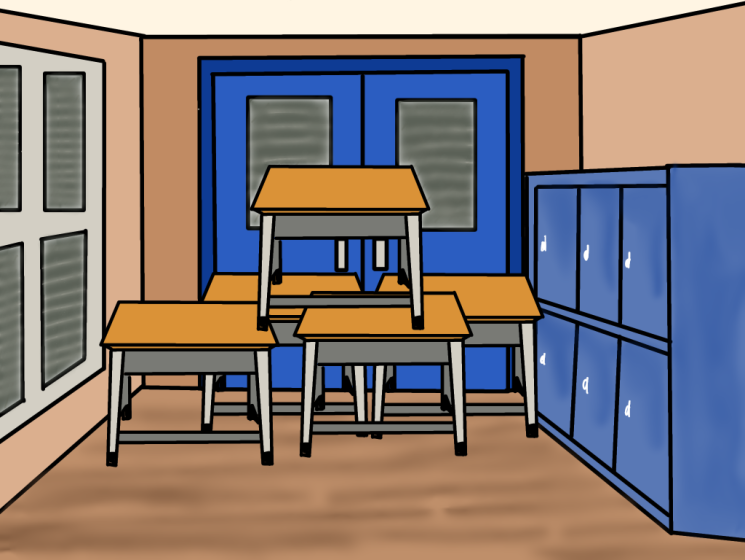
By Lauren Hyland
Active shooter drills have become a standard protocol in many schools across the globe, especially in regions where incidents of mass shootings have tragically become a recurring reality. The intent behind these drills is clear: to prepare students, teachers and staff for the possibility of a violent intruder on campus and to mitigate potential casualties in the event of such an incident. However, the effectiveness of these drills is a topic of ongoing debate, raising questions about their psychological impact on participants and the efficacy of their outcomes.
Proponents argue that active shooter drills are essential for enhancing preparedness and response during an emergency situation. By simulating realistic scenarios and practicing evacuation procedures, lockdowns and other safety protocols, schools aim to empower individuals with the knowledge and skills needed to react swiftly and effectively in a crisis. Advocates also contend that familiarity with these procedures can reduce panic and confusion, potentially saving lives by facilitating a coordinated response.
Moreover, supporters point to anecdotal evidence suggesting that active shooter drills have contributed to successful outcomes in real-life situations. Reports of schools successfully implementing lockdown procedures during actual threats and minimizing casualties lend credence to the idea that preparedness efforts can make a difference in the face of danger.
However, critics raise several concerns regarding the efficacy and unintended consequences of active shooter drills, particularly in the context of school environments. One major issue is the potential psychological impact on participants, especially students. Critics argue that repeated exposure to simulated violence and fear-inducing scenarios can lead to heightened anxiety, trauma and even desensitization among students, potentially exacerbating mental health issues.
Furthermore, there is a lack of empirical evidence supporting the direct effectiveness of active shooter drills in preventing casualties during actual incidents. While proponents cite success stories, it is challenging to isolate the impact of drills from other factors that may influence outcomes, such as law enforcement response time, the profile of the assailant or sheer luck.
Additionally, critics emphasize the need to balance preparedness with maintaining a safe and nurturing school environment. Overemphasis on security measures, including frequent drills and visible security infrastructure, can inadvertently create an atmosphere of fear and paranoia, detracting from the educational mission of schools and fostering a culture of surveillance and mistrust.
In response to these concerns, some experts advocate for a more holistic approach to school safety that incorporates mental health support, community engagement, and violence prevention strategies alongside traditional security measures. They argue that focusing solely on reactive measures like active shooter drills overlooks the root causes of violence and neglects the broader goal of creating inclusive, supportive school environments where all students feel safe and valued.
In conclusion, the effectiveness of active shooter drills in schools remains a subject of debate, with proponents highlighting their potential to enhance preparedness and response capabilities, while critics raise concerns about their psychological impact and efficacy in preventing casualties. Moving forward, it is crucial to strike a balance between ensuring physical safety and promoting mental well-being in educational settings. This may require reevaluating the frequency and implementation of drills, prioritizing comprehensive safety measures and addressing the underlying factors contributing to violence in schools. Ultimately, the goal is to create environments where students can learn and thrive without the constant specter of violence hanging over their heads.





